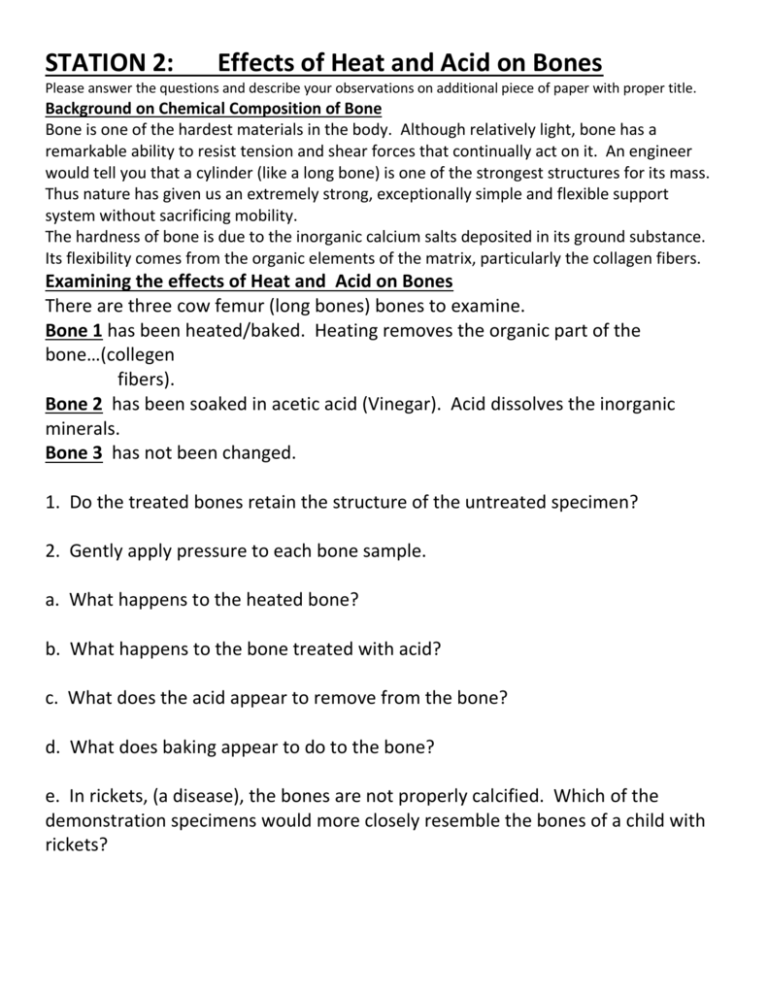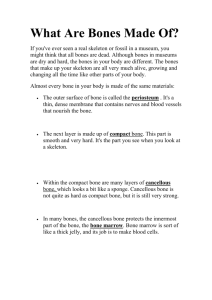Bone experiment questions - Liberty Union High School District
advertisement

STATION 2: Effects of Heat and Acid on Bones Please answer the questions and describe your observations on additional piece of paper with proper title. Background on Chemical Composition of Bone Bone is one of the hardest materials in the body. Although relatively light, bone has a remarkable ability to resist tension and shear forces that continually act on it. An engineer would tell you that a cylinder (like a long bone) is one of the strongest structures for its mass. Thus nature has given us an extremely strong, exceptionally simple and flexible support system without sacrificing mobility. The hardness of bone is due to the inorganic calcium salts deposited in its ground substance. Its flexibility comes from the organic elements of the matrix, particularly the collagen fibers. Examining the effects of Heat and Acid on Bones There are three cow femur (long bones) bones to examine. Bone 1 has been heated/baked. Heating removes the organic part of the bone…(collegen fibers). Bone 2 has been soaked in acetic acid (Vinegar). Acid dissolves the inorganic minerals. Bone 3 has not been changed. 1. Do the treated bones retain the structure of the untreated specimen? 2. Gently apply pressure to each bone sample. a. What happens to the heated bone? b. What happens to the bone treated with acid? c. What does the acid appear to remove from the bone? d. What does baking appear to do to the bone? e. In rickets, (a disease), the bones are not properly calcified. Which of the demonstration specimens would more closely resemble the bones of a child with rickets?








